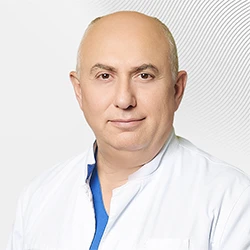![]()
Long preparation, lots of research, careful implementation of medical recommendations, IVF protocol and an exciting two weeks of waiting for the result after embryo transfer – finally, all this is left behind: pregnancy has arrived, as confirmed by the HCG test. Once again, the woman is overwhelmed by many questions and worries. What should I do next? How to behave while waiting for a baby? Is pregnancy after IVF different from a natural pregnancy? How will the birth go?
Features of pregnancy after IVF
By the end of the first trimester, hormone therapy, which was prescribed after embryo transfer, is canceled. The further course of pregnancy is no different from the one that naturally occurs. However, given that IVF protocol is used by women with a burdened medical history, monitoring of such pregnancies should be as thorough as possible, especially in the case of multiple pregnancies.
After confirming the fact of pregnancy, all patients undergo a series of mandatory examinations and tests. Many of them are performed by women even before the IVF protocol, but if necessary, the doctor can re-prescribe them
What tests and examinations are carried out
In the first trimester, consultations with an ophthalmologist, an otorhinolaryngologist, and an endocrinologist are necessary to diagnose a pathology that may affect the course of pregnancy.
During pregnancy, blood tests are performed to detect anemia and iron deficiency, and monthly urine tests are performed to exclude asymptomatic bacteriuria and proteinuria.
After a positive HCG result, the patient undergoes an ultrasound examination to confirm pregnancy. This is possible as early as 3 weeks after embryo transfer. It is usually performed by a reproductologist who led the ART program.
The study shows exactly where the embryo was implanted. Although embryo transfer into the uterine cavity is carried out under ultrasound control, in 1% of cases, due to uterine contractions, embryo implantation occurs in the fallopian tube.
It is mandatory to perform ultrasound and biochemical screening (b-hCG, RARP-A-test) to determine the risk of chromosomal abnormalities.
During pregnancy, it is necessary to perform 3 mandatory important ultrasound examinations in each trimester, but if necessary, the doctor may prescribe additional ones.
When is ultrasound performed
The first ultrasound screening is performed during pregnancy at 11-13 weeks. In the future, mandatory ultrasound examinations are performed on time:
- 18-21 weeks
- H0-34 weeks
Ultrasound screening in the first trimester
The first trimester ultrasound is performed during pregnancy from 11 weeks 0 days to 13 weeks +5 days.
At this time, it is already possible to assess the anatomy of the fetus and, most importantly, the presence of ultrasound markers of chromosomal abnormalities is determined, such as the thickness of the cervical fold in the fetus, the presence of a nasal bone. Then, based on the results of ultrasound parameters and biochemical blood parameters, the risk of chromosomal abnormalities in the baby is calculated.
Ultrasound screening in the second trimester (18-21 weeks) allows:
- To detect malformations – at this time it is possible to visualize all the organs and structures of the fetus, as well as to assess its size.
- To assess the condition of the placenta and the place of its attachment, exclude its complete presentation or marginal presentation (this may increase the risk of bleeding during pregnancy).
- To assess the condition of the cervix, whether there are signs of isthmic-cervical insufficiency.
If the pregnancy after IVF is single and proceeds normally, a standard monthly follow-up with a gynecologist is sufficient. In case of multiple pregnancies, follow-up examinations in the second trimester take place more often, every 2-3 weeks.
Ultrasound in the third trimester (30-34 weeks) is aimed at:
- Assessment of fetal development, determination of its position
- Checking the compliance of the size and weight of the baby with the terms of pregnancy
- Position and degree of maturity of the placenta
Dopplerography reveals blood flow disorders in the umbilical cord artery, the middle cerebral artery of the fetus and the uterine arteries of the mother.
In the third trimester, follow-up examinations with a gynecologist take place every 2 weeks during the normal course of pregnancy.
Childbirth after IVF: self-delivered or cesarean?
IVF is not an indication for a cesarean section. As a rule, these patients give birth on their own.
The method of delivery depends only on obstetric indications.
Advantages of pregnancy management after IVF in EMC
EMC is a multidisciplinary clinic where doctors of various specialties (reproductologists, obstetricians and gynecologists, endocrinologists, geneticists and others) work. If necessary, all necessary doctors are involved in pregnancy management.Questions and answers
.webp)





















.webp)








.webp)

.webp)



